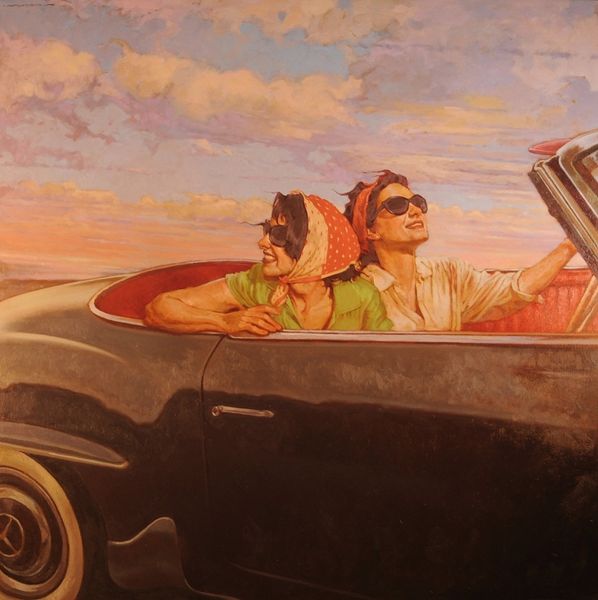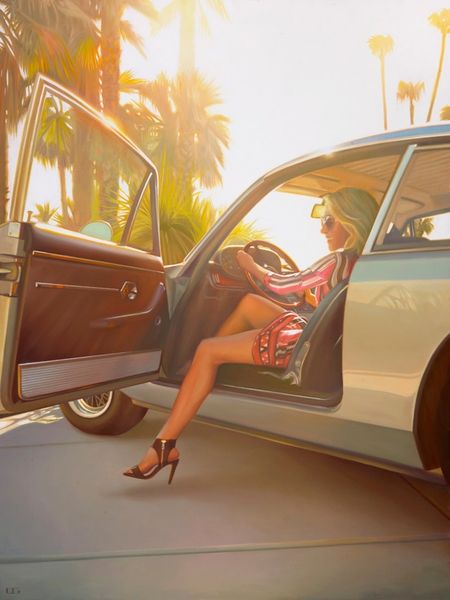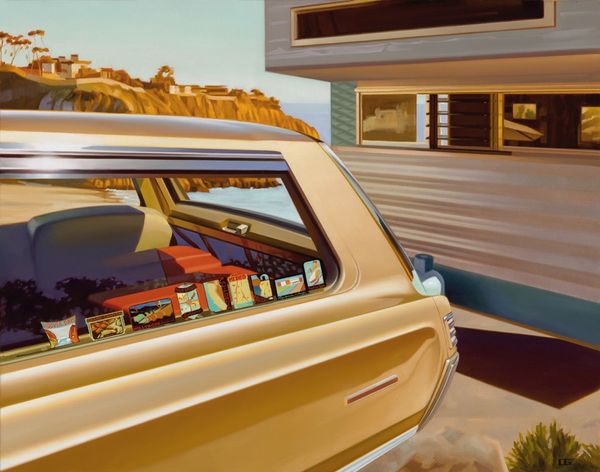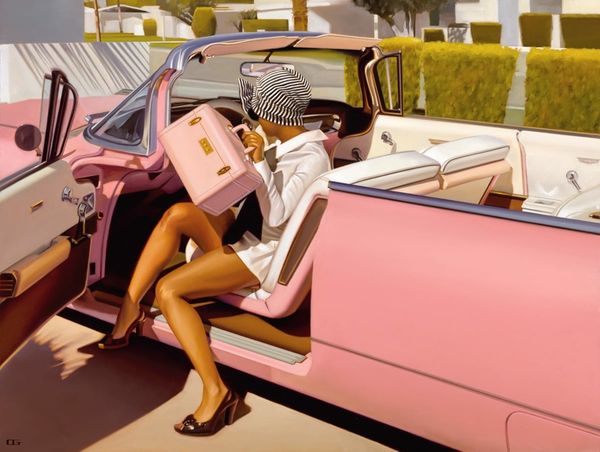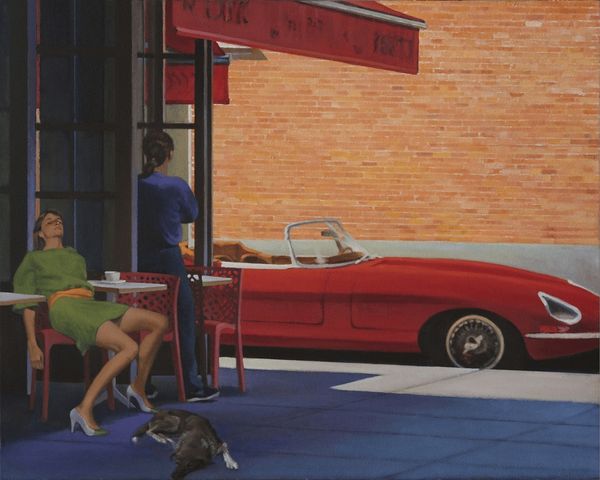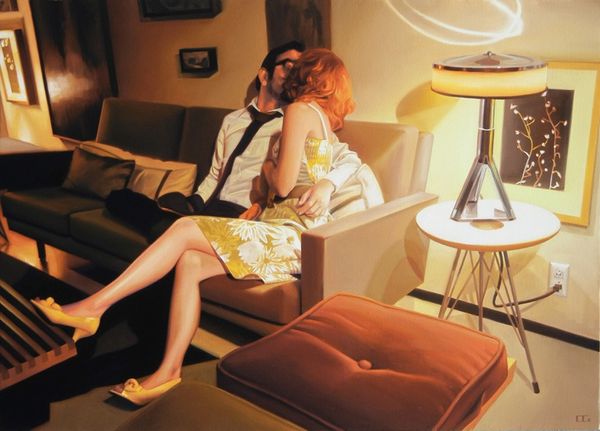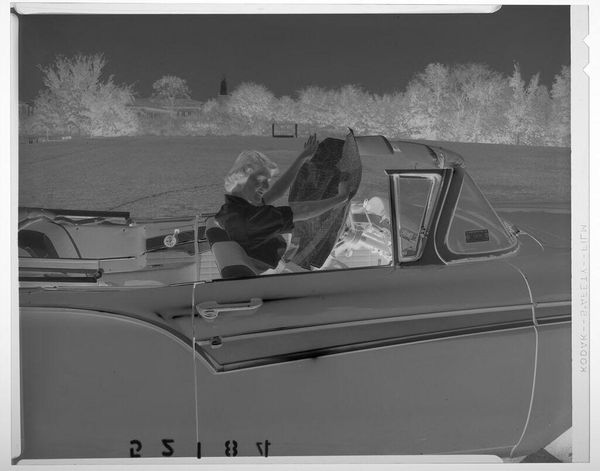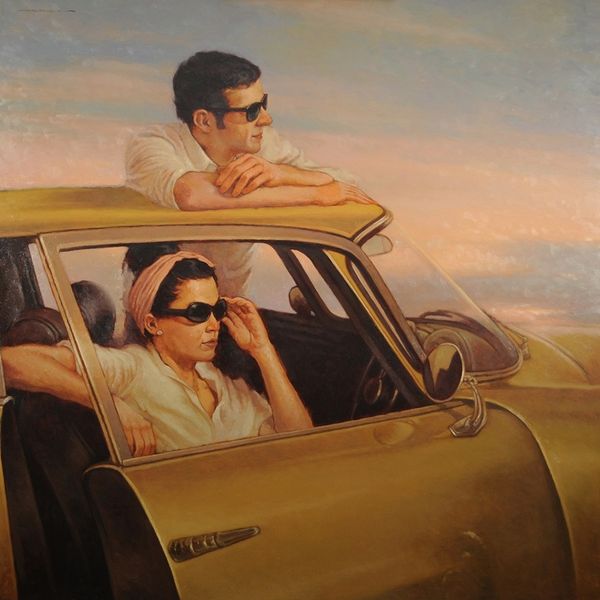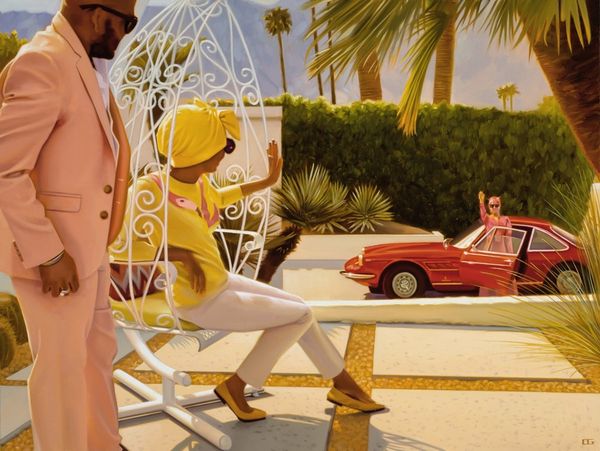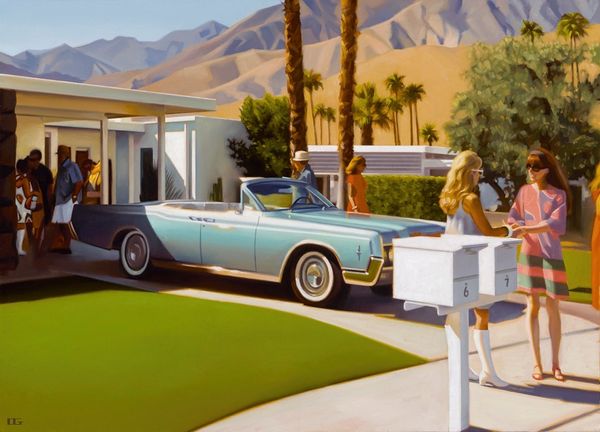
painting, plein-air
#
figurative
#
painting
#
plein-air
#
landscape
#
figuration
#
romanticism
#
genre-painting
#
realism
Copyright: Modern Artists: Artvee
Curator: "Fancy Free" by Joseph Lorusso certainly captures a sense of breezy, carefree summer days. My first impression is of vintage vibes and a feeling of nostalgic warmth, don't you think? Editor: Yes, that sense of nostalgia is strong. What strikes me is the construction of leisure. This feels very staged, more like a movie scene than real life. I’m drawn to consider who this vision of carefree driving is intended to serve, which societal structure it reinforces, or perhaps questions. Curator: True. Lorusso seems very focused on how he applies paint in open-air methods, similar to plein-air painting traditions, focusing on material capturing fleeting moments under particular weather conditions and on location to inform their work. Here, it's a matter of the thick, almost gooey way the medium sits on the panel to suggest this feeling of the sunshine, creating these smooth and blended transitions for the cars, landscape, and people in the scene. What do you see from an institutional lens? Editor: I immediately think of the tradition of painting leisure, but with some updated messaging about consumer culture, class aspirations, and individual expression that feels very relevant to its context. Paintings like this also play a role in solidifying historical narratives, suggesting who gets to be "fancy free" and how these privileges operate in public consciousness. Curator: I see how these open cars, convertibles almost, imply something about the consumption and cultural value that an object can possess by way of access, especially if this image makes you remember particular histories and moments when people in particular communities had access to that and some did not. Editor: Exactly! It reinforces narratives and affects how we interpret reality. The deliberate rendering of such details underscores the image's function within broader socio-political discussions, impacting what we internalize and express. Curator: Considering Lorusso's process and material choices helps us contextualize how consumer imagery makes and keeps value through memory-making. These subtle qualities influence how audiences interact and understand art and material consumption as more than just economics, touching upon self-expression and history making. Editor: Absolutely. This painting’s existence within cultural institutions provides a specific view of “the good life,” reflecting the socio-economic narratives it chooses to celebrate. Examining these factors empowers viewers to critically assess art’s impact on cultural discourse.
Comments
No comments
Be the first to comment and join the conversation on the ultimate creative platform.
